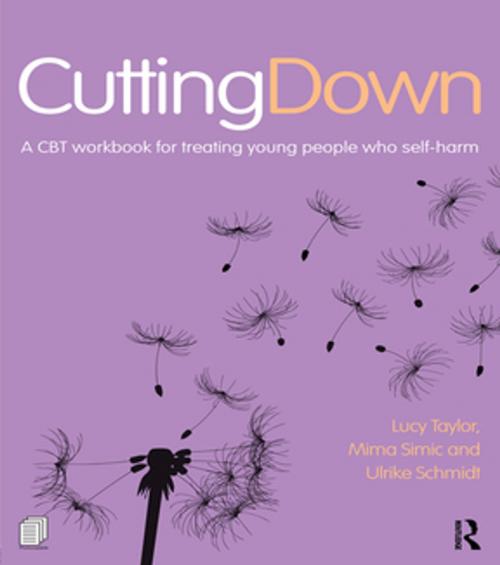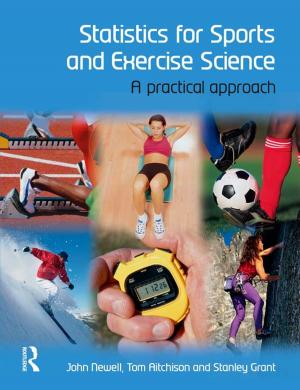Cutting Down: A CBT workbook for treating young people who self-harm
Nonfiction, Health & Well Being, Psychology, Child & Adolescent, Child Psychology, Mental Health| Author: | Lucy Taylor, Mima Simic, Ulrike Schmidt | ISBN: | 9781317815297 |
| Publisher: | Taylor and Francis | Publication: | February 20, 2015 |
| Imprint: | Routledge | Language: | English |
| Author: | Lucy Taylor, Mima Simic, Ulrike Schmidt |
| ISBN: | 9781317815297 |
| Publisher: | Taylor and Francis |
| Publication: | February 20, 2015 |
| Imprint: | Routledge |
| Language: | English |
A quarter of adolescents engage in some form of self-harm and even experienced therapists can find working with these young people difficult. Based on Cognitive Behaviour Therapy (CBT), a highly effective method for working with emotional problems, Cutting Down offers a practical and accessible programme for mental health therapists from different professional backgrounds working with young people who self-harm.
The programme is comprised of four parts, each covering a specific stage of therapy, and is split into 27 short modules. Although designed to be delivered over a course of 14 sessions, the programme is presented in a way that allows the therapist to decide which combination of specific modules is chosen and how long is spent on each, based on the specific clinical needs of the person they are working with. Throughout the programme, virtual patients are used to illustrate the various exercises and strategies. Part One, What’s Going On?, introduces self-harm and CBT and aims to develop insight into feelings, problems, goals and the concept of change. Part Two, Feelings, Thoughts and Behaviour, looks at working on activities, managing depression and identifying and managing negative thoughts. Part Three, Coping Strategies, introduces modules on problem solving, assertiveness, mindfulness and alternatives to self-harm. Part Four, On You Go!, finishes up the programme with a review of goals, identifying triggers and developing a ‘first aid kit’ and a ‘tool box’ of skills to reinforce the programme. Downloadable worksheets enhance the practicality of the text.
Designed to support clinicians working with adolescents engaging in self-harm, this unique workbook is ideal for counsellors, counselling psychologists, clinical psychologists, CBT therapists, IAPT practitioners, CAMHS mental health workers and nurse therapists as well as students and trainees.
A quarter of adolescents engage in some form of self-harm and even experienced therapists can find working with these young people difficult. Based on Cognitive Behaviour Therapy (CBT), a highly effective method for working with emotional problems, Cutting Down offers a practical and accessible programme for mental health therapists from different professional backgrounds working with young people who self-harm.
The programme is comprised of four parts, each covering a specific stage of therapy, and is split into 27 short modules. Although designed to be delivered over a course of 14 sessions, the programme is presented in a way that allows the therapist to decide which combination of specific modules is chosen and how long is spent on each, based on the specific clinical needs of the person they are working with. Throughout the programme, virtual patients are used to illustrate the various exercises and strategies. Part One, What’s Going On?, introduces self-harm and CBT and aims to develop insight into feelings, problems, goals and the concept of change. Part Two, Feelings, Thoughts and Behaviour, looks at working on activities, managing depression and identifying and managing negative thoughts. Part Three, Coping Strategies, introduces modules on problem solving, assertiveness, mindfulness and alternatives to self-harm. Part Four, On You Go!, finishes up the programme with a review of goals, identifying triggers and developing a ‘first aid kit’ and a ‘tool box’ of skills to reinforce the programme. Downloadable worksheets enhance the practicality of the text.
Designed to support clinicians working with adolescents engaging in self-harm, this unique workbook is ideal for counsellors, counselling psychologists, clinical psychologists, CBT therapists, IAPT practitioners, CAMHS mental health workers and nurse therapists as well as students and trainees.















